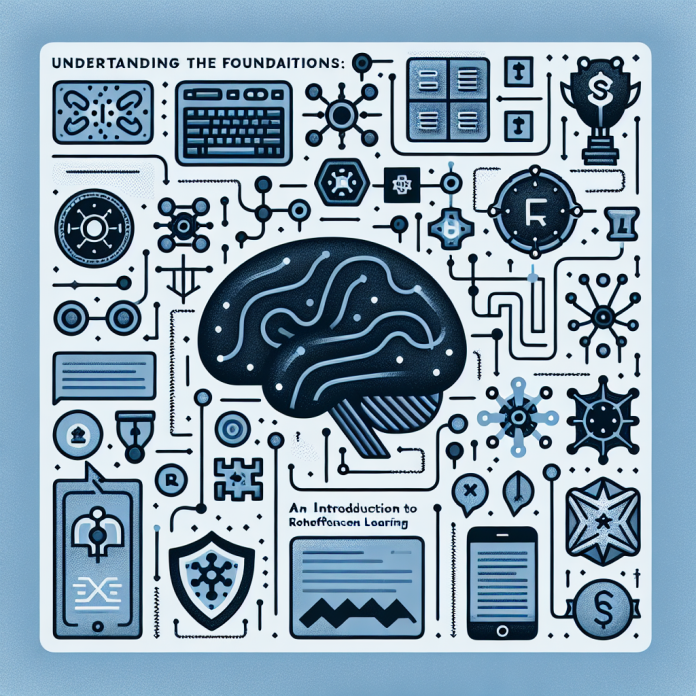Reinforcement learning is a fascinating field of artificial intelligence that has gained significant attention in recent years. It allows machines to learn from their own experiences, just like how humans learn from trial and error. In simple terms, reinforcement learning is a type of machine learning where an agent learns to make decisions by receiving feedback from its environment through reward signals.
### Understanding the Basics
At the core of reinforcement learning is the concept of an agent interacting with an environment. The agent takes actions, which in turn affect the state of the environment, and receives feedback in the form of rewards or penalties based on its actions. The goal of the agent is to maximize the cumulative reward it receives over time.
Imagine you are training a dog to perform tricks. Every time the dog successfully executes a trick, you give it a treat as a reward. If the dog performs poorly, you might withhold the treat. Through this process, the dog learns which actions lead to rewards and which lead to penalties. This is essentially how reinforcement learning works.
### Key Components
There are three key components in reinforcement learning: the agent, the environment, and the rewards.
– **Agent**: The agent is the entity that takes actions based on the current state of the environment. It decides what action to take next in order to maximize its cumulative reward.
– **Environment**: The environment is the external system with which the agent interacts. It provides feedback to the agent based on the actions it takes. The environment can be anything from a video game to a robotic arm.
– **Rewards**: Rewards are the feedback signals that the agent receives from the environment. These rewards can be positive or negative and are used by the agent to learn which actions lead to desirable outcomes.
### Reinforcement Learning Algorithms
There are several algorithms used in reinforcement learning to help agents learn how to make decisions. Two of the most popular ones are Q-learning and Deep Q Network (DQN).
– **Q-learning**: Q-learning is a model-free reinforcement learning algorithm that helps the agent learn the quality of actions in a given state. The Q-value represents the expected cumulative reward the agent will receive by taking a specific action in a particular state. The agent updates its Q-values based on the reward it receives from the environment.
– **Deep Q Network (DQN)**: DQN is an extension of Q-learning that uses deep neural networks to approximate the Q-values. This allows the agent to learn complex decision-making tasks by processing raw sensory inputs, such as images. DQN has been successfully applied to various tasks, including playing video games and controlling robotic systems.
### Real-life Applications
Reinforcement learning has been successfully applied to a wide range of real-world problems, including:
– **Game Playing**: One of the most well-known applications of reinforcement learning is in playing games. AlphaGo, developed by DeepMind, famously defeated the world champion in the game of Go using deep reinforcement learning techniques.
– **Robotics**: Reinforcement learning is used to train robots to perform complex tasks, such as grasping objects, navigating environments, and interacting with humans. This has important implications for industries like manufacturing, healthcare, and logistics.
– **Recommendation Systems**: Companies like Netflix and Amazon use reinforcement learning algorithms to personalize recommendations for their users. By learning from user interactions, these systems can improve the accuracy of their suggestions over time.
### Challenges and Limitations
While reinforcement learning has shown great promise in a variety of domains, it also faces several challenges and limitations:
– **Sample Efficiency**: Reinforcement learning algorithms often require a large number of interactions with the environment to learn optimal policies. This can be computationally expensive and time-consuming in practice.
– **Exploration vs. Exploitation**: Balancing exploration (trying new actions to learn more about the environment) and exploitation (taking actions that are known to yield rewards) is a key challenge in reinforcement learning. A good agent must strike a balance between the two to maximize long-term rewards.
– **Safety and Ethics**: As reinforcement learning algorithms are deployed in real-world applications, concerns around safety and ethics become increasingly important. Ensuring that agents behave responsibly and ethically is crucial to avoid harmful consequences.
### Conclusion
Reinforcement learning is a powerful technique that has the potential to revolutionize the way machines learn and interact with the world. By enabling agents to learn from their own experiences, reinforcement learning opens up new possibilities for autonomous systems in a wide range of domains. From playing games to controlling robots, the applications of reinforcement learning are endless. However, it is important to approach this technology with caution and ensure that ethical considerations are taken into account. As researchers continue to push the boundaries of what is possible with reinforcement learning, the future looks bright for this exciting field of artificial intelligence.

